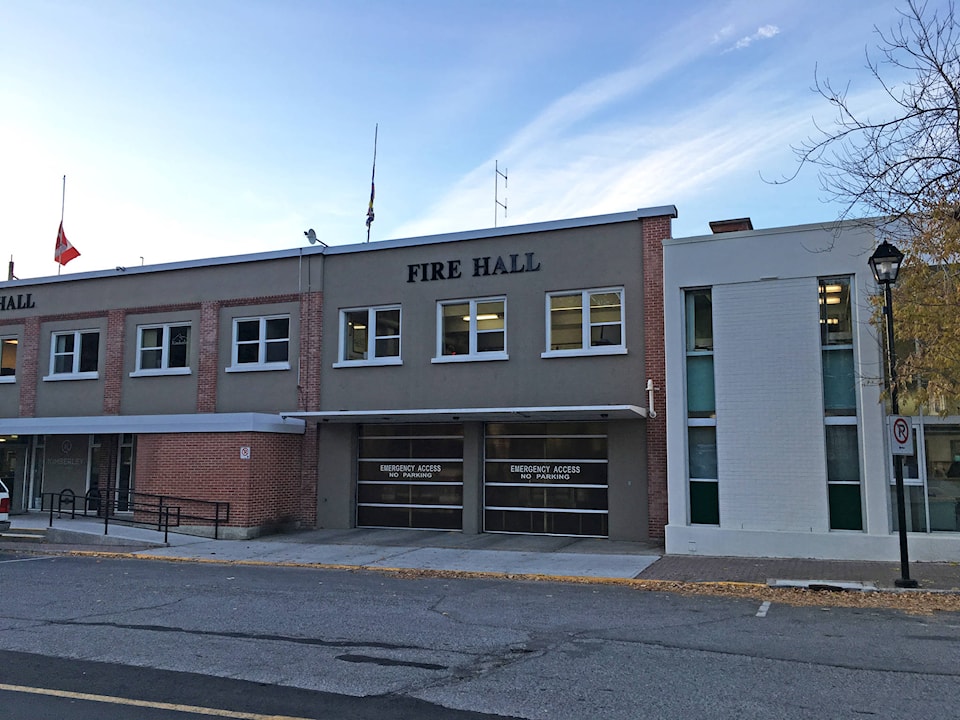The union representing BC Ambulance Service paramedics is concerned with the downloading of costs to municipalities after Cranbrook firefighters recently received legal approval to provide increased medical response services.
Cameron Eby, the president of Ambulance Paramedics of B.C. – CUPE 873, says trials of firefighting departments providing Emergency Medical Response services in other areas of the province concluded there was no finding of improved patient care or patient outcome.
Eby added that municipalities shouldn’t have to fund an EMR service when the BC Ambulance Service (BCAS) is responsible for providing those services province-wide.
Kimberley Fire Chief, Rick Prasad explained that Kimberley firefighters do not provide medical response services, nor do they receive such training.
“Since the service from our department was reduced, emergency response training is no longer a part of the current structure,” explained Prasad, who says it comes down to the budget. “It’s definitely a big cost to have that program in place.”
“Those costs, some of them we can define is the training and then the ongoing costs of equipment and that sort of thing,” explained Eby.
As far as EMR services are concerned, Eby says most of it has to do with diagnostics rather than live-saving procedures.
“It really adds a bunch of diagnostic skills; there’s no life-saving immediate intervention that’s added with the EMR level,” Eby said. “Those life-saving interventions are things like CPR, ventilation, defibrillation, choking, airway clearing and bleeding control, and those are all skills within the role at the first-responder level.”
Other issues around the provision of EMR services include legal liability and the ongoing training that is required with EMR certification.
Eby says there must be 20 credits of Continuing Medical Education (CME) per year, which equates to roughly 20 hours of annual training that comes with a cost.
“Obviously, we’re advocates for the best patient care possible and we believe that paramedics in BCEHS ambulances are the definitive pre-hospital care in British Columbia,” Eby said, “so we think that municipalities shouldn’t take on this download and that cost and liability.”
Community
para-medicine
a success
The province recently expanded a community para-medicine program to 76 communities across the province after using Creston and Elkford as pilot projects in 2015.
According to the BCEHS, the objective of community para-medicine is to help stabilize paramedic staffing in small and rural communities while identifying and bridging gaps in local health care service.
Eby points to two initiatives that help connect medical service providers with a patient, while another helps keep patients in their home who require palliative care instead of having to relocate to a health care facility.
“One of them is called Home and Health Care Monitoring, so that’s a partnership with the Ambulance Service, Health Authority and Telus to provide a device to patients in their home for a daily basis,” said Eby, “Basically an iPad, and they are able to enter in information about their own health status, such as their own blood pressure, and their heart rate and their weight and that sort of stuff.
“It connects the community paramedic and their primary physician all together with the patient and they can monitor their health status. So both the paramedic and the physician involved can see if there’s any change in their health status and intervene right away.”
The community paramedicine program has been well received throughout the province, Eby added.
“In general, the community paramedic staff, we’ve got about 100 people that have moved into those roles province-wide,” he said, “It’s become a popular program and we’re getting lots of applications. It’s now moving from part time positions into more full time positions so a lot of growth expected there.”
The BCAS employs 3,600 paramedics across BC and Eby says there’s a need for not just more staff, but a change in how staffing is currently utilizing a part-time, on-call system.
“Our paramedics just can’t rely on a steady source of income from that, so that’s leading to real difficulties with recruitment and retention and we’re losing qualified paramedics to other provinces and places like the oilfields in industry,” he said. “So we’ve been advocating for more resources but also for the conversion of those on-call resources into actual paid positions.
However, a number of reviews are underway which is leading to change and this is encouraging, he added.
Staff and resources have recently been added in Vancouver and Nanaimo, while reviews are underway in Williams Lake, Dawson Creek, Trail, Kamloops, Kelowna and the Fraser Valley.
